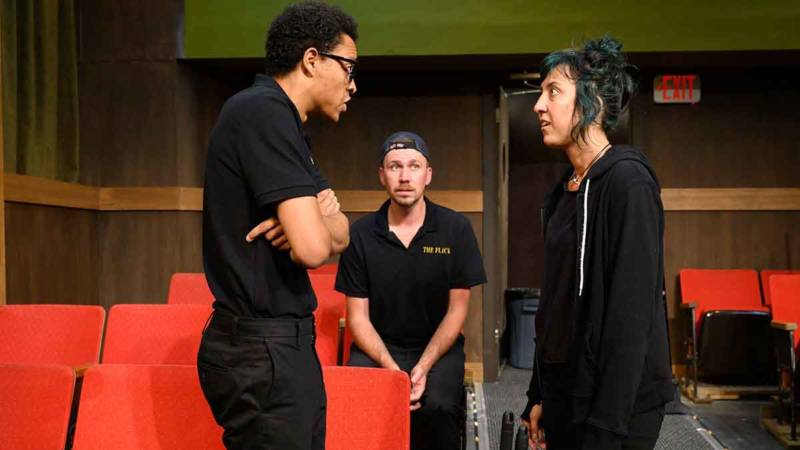Every customer service job comes with moments of relative inactivity; those blessed stretches of the work shift where there’s nobody to wait on, and where you can take a breather to commiserate with your fellow employees.
At movie theaters, those stretches last much longer, and the routine talk between rushes goes deeper. Add the fact that many theater staff are young. Also, that discussing why you like or don’t like a movie usually brings up personal experiences and emotional details. All of this gets magnified as the clock ticks into nighttime, when movies regularly get out after midnight.
This is the premise of The Flick, the Pulitzer-winning play by Annie Baker currently making its West Coast premiere at Shotgun Players’ Ashby Stage in Berkeley. Full of dialogue and situations that will feel very familiar to anyone who’s worked a customer service job, it also (hopefully) inspires empathy toward the beleaguered minimum-wage worker in those who haven’t.
The Flick starts slowly, because time at a movie theater moves slowly. As Sam (Chris Ginesi) and Avery (Justin Howard) sweep up between rows of seats after a show, the pauses between conversation are almost painfully long. Sam is showing new employee Avery the basic stuff like where to take the trash, and soon, more complicated stuff, like the elaborate system of skimming the box office cash register.
Also complicated is Sam’s attraction to projectionist Rose (Ari Rampy), who flirts instead with Avery, the new kid on the block. Meanwhile, Avery’s worried about Rose’s blatant overtures upsetting Sam, and about being blamed, as a nonwhite employee, should the cash-theft scheme be discovered. Hanging over all this is the theater industry’s imminent conversion to digital projection, and rumors that the small local theater will be sold to a corporate chain.


